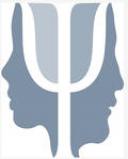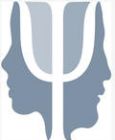Education
Intermediary Inventive Minds
Teachers’ beliefs filter, frame, and guide the efforts of their students.
Posted February 29, 2016
By Helenrose Fives, Professor Educational Foundations, Montclair State University and Michelle M. Buehl, Associate Professor Educational Psychology, George Mason University
You make a great, a very great mistake, if you think psychology, being a science of the mind’s laws, is something from which you can deduce definite programs and schemes and methods of instruction for immediate school use. Psychology is a science and teaching is an art. And sciences never generate arts directly out of themselves. An intermediary inventive mind must make the application by using its originality (James, 1899, p. 7).
Educational psychologists are engaged in research with significant implications for teaching and learning in schools. However, for that research to benefit learners, educational psychologists must consider the role of teachers, as they are the intermediary inventive minds who will use their originality to translate the science from educational psychology research into practices for the classroom. Further, in the current context of education policy reforms and new curriculum standards, teachers are responsible for enacting policy decisions. Teachers’ beliefs may support or hinder how researcher-recommended practices and policy decisions are translated into action within the classroom.
Teachers’ beliefs represent a complex, integrated, and multidimensional system of what an individual holds to be true about the world (e.g., Fives & Buehl, 2012). Teachers’ beliefs filter new information, frame the space when planning and problem solving, and guide immediate action (Fives & Buehl, In press-a). That is, teachers’ beliefs may influence how teachers a) interpret research findings, recommended practices, new policies, and curriculum standards; b) define the teaching task at hand, be it related to planning, instruction, or assessment; and c) respond to students as they implement practices in the classroom. Given their complex nature, multiple functions, and context sensitivity, teachers’ beliefs may have wide-reaching effects.
Although the literature is mixed with respect to clear causal connections between teachers’ beliefs and practices (see Buehl & Beck, 2015 for a review), incongruence between the teachers’ beliefs and practices is related to decreases in teacher motivation, affect, and well-being, and increases in attrition (Fives & Buehl, In Press-b), all of which have implications for students. Teachers, as critical consumers and users of research and policy recommendations, need opportunities to explore their current beliefs and practices in light of the underlying theoretical stances inherent in such recommendations. Further, researchers and policy makers would benefit from being more sensitive to the perspectives of teachers who build their personal theories based on their daily lived experiences in classrooms embedded in diverse communities.
Recent education reforms and new curriculum standards reflect particular perspectives that may or may not align with teachers’ interconnected, deeply-held, and often implicit, beliefs. For example, embedded in the Framework for K-12 Science Education: Practices, Crosscutting Concepts, and Core Ideas (Framework; National Research Council, NRC, 2012) and Common Core State Standards (CCSS, 2010ab) in mathematics and language arts is the expectation that learners will engage in complex thinking including argumentation and evidence-based reasoning. Such expectations for learners have repercussions for teachers and the interaction of their beliefs serving as filters, frames, or guides to interpret, plan, and enact research and policy recommendations.
As filters, teachers’ beliefs shade how recommendations and policy are understood and interpreted. For instance, standards that emphasize the role of argumentation must be interpreted by teachers through their beliefs about knowledge, the nature of learning, and their particular context and students. A teacher may see the epistemic value of argumentation for learning but consider that kind of thinking only appropriate for some topics or for some of her/his students. Thus, there is an issue of salience to attend to, and the specific beliefs that are most salient for the teacher may take precedence in any situation.
For example, when Helenrose (first author) was a new doctoral student and practicing teacher, she was told about a new metaphor for teaching – teaching as persuasion – which she promptly rejected. Teaching, she felt, should not be about convincing students to think a particular way, but should be about exposing students to a variety of ideas and letting them choose. Her initial beliefs about what “persuasion” was filtered her thinking about this approach to teaching leading to an early, under-processed, perspective on it. (Of note, her first year project and first publications ended up being on this very topic; it seems her advisor Patricia Alexander and fellow doctoral student P. Karen Murphy could be quite persuasive).
When beliefs serve as frames, they are consciously evoked and used to understand a particular task or problem of practice. As teachers plan instruction or evaluate student work, they take to these tasks prioritized beliefs that help them to frame the task and establish goals. Thus, if the teaching and learning task is framed with a belief that students can and should engage in argumentation and the active justification of knowledge claims, then the nature of instructional planning shifts and becomes focused on these goals. In assessment, the teacher may focus more on the supports student provide than the “accuracy of the answer.”
Teachers’ beliefs about the source of “accurate” knowledge serve as frames during assessment activities. For instance, a teacher Helenrose worked with last year relied heavily on the basal reader for her fifth grade reading instruction. The textbook was considered to be “the source” of knowledge. When correcting students’ responses to reading comprehension questions, this teacher compared each response the “suggested” answers in the text. If they did not match, the answer was marked wrong, regardless of the explanation the student provided. This teacher’s beliefs about the value of the knowledge provided in the text framed how she approached the evaluation of her students’ work. Explorations into teachers’ epistemic cognition related to the dual tasks of learning and teaching may inform teacher education practice and facilitate innovations in instruction such as movements toward assessment literacy (e.g., Buehl & Fives, In press; Popham, 2011).
Beliefs also guide our immediate actions and interactions with others. As guides, beliefs may serve as a direct influence on behavior or as a standard used by the individual to evaluate and identify behavior targets. As teachers progress in the profession, they develop and refine beliefs about what it means to be a “good teacher.” Such beliefs may be informed by research, policy, and experience. However, these beliefs often determine how teachers will act in their role and in their classrooms.
As noted in the opening quote from James, teachers must make use of their inventive mind to transform recommendations from research and practice into the art that is teaching. This art is heavily influenced by the beliefs teachers hold. As such, teachers need opportunities to reflect on and evaluate how their beliefs facilitate or hinder their teaching practices with specific contexts as well as time for meaningful change to occur. Given the complexity of teachers’ beliefs, they may need assistance identifying the interconnections among their beliefs when engaging in teaching practices. Thus, for the successful translation of research and policy into practice, we propose that researchers and policy makers must consider the intermediary role of teachers and attend to their needs, including the alignment of their beliefs and recommended practices, as a means to enhance learning for students.
This post is the first in a special series curated by APA Division 15 President Nancy Perry. The series, centered around her presidential theme of "Bridging Theory and Practice Through Productive Partnerships," stems from her belief that educational psychology research has never been more relevant to practitioners' goals. Perry hopes the blog series will provoke critical and creative thinking about what needs to happen so that researcher and practitioner groups can work together collaboratively and productively. Those interested can learn more—and find links to the full series—here.
References
Buehl, M. M. & Beck, J. S. (2015). The relationship between teachers’ beliefs and teachers’ practices. In H. Fives & M. G. Gill, (Eds.). The handbook of research on teachers’ beliefs (p. 66-84). New York, NY: Routledge.
Buehl, M. M. & Fives, H. (In Press). The role of epistemic cognition in teacher learning and praxis. In J. A. Greene, W. Sandoval, & I. Bråten, (Eds.) Handbook of epistemic cognition. New York, NY: Routledge.
Common Core State Standards Initiative. (2010a). Common Core State Standards for English language arts and literacy in history/social studies, science, and technical subjects. Retrieved from http://www.corestandards.org
Common Core State Standards Initiative. (2010b).Common Core State Standards for mathematics. Retrieved from http://www.corestandards.org
Fives, H. & Buehl, M. (In Press-a). The functions of teachers’ beliefs: Personal epistemology on the pinning block. In G. Schraw, J. Lunn, L. Olafson & M. VanderVeldt (Eds.). Teachers’ personal epistemologies: Evolving models for transforming practice.
Fives, H., & Buehl, M. M. (In Press-b). Teachers’ motivation and beliefs. In K. Wentzel & D. Miele, (Eds.). The Handbook on Motivation at School. New York, NY: Routledge.
Fives, H. & Buehl, M. (2012). Spring Cleaning for the “messy” construct of teachers’ beliefs: What are they? Which have been examined? What can they tell us? In K.R. Harris, S. Graham, & T. Urdan (Eds.). APA educational psychology handbook: Volume 2 individual differences and cultural and contextual factors (p. 471-499). Washington, DC: American Psychological Association.
James, W. (1899). Talks to teachers on psychology: And to students on some of life’s ideals. New York, NY: Henry Holt and Company.
National Research Council. (2012). A framework for K-12 science education: Practices, crosscutting concepts, and core ideas. Committee on a Conceptual Framework for New K-12 Science Education Standards, Board on Science Education, Division of Behavioral and Social Sciences and Education. Washington, D.C.: National Academies Press.
Popham, J. W. (2011). Assessment literacy overlooked: A teacher educator’s confession. The Teacher Educator, 46, 4, 265-273. doi: 10.1080/08878730.2011.605048




